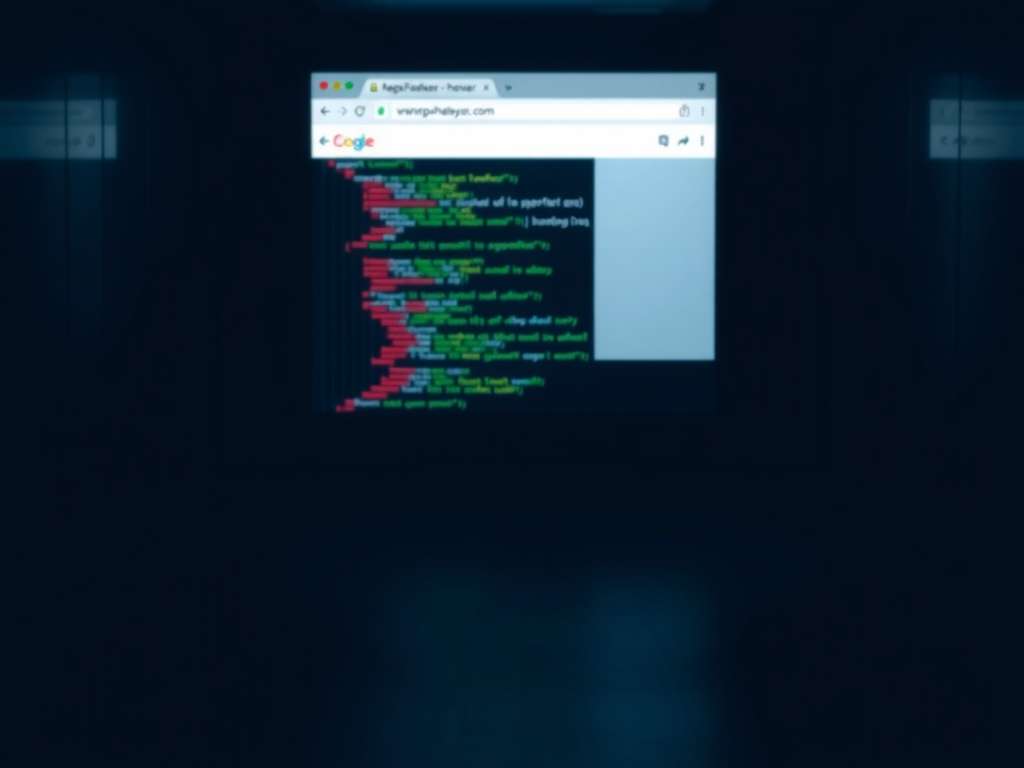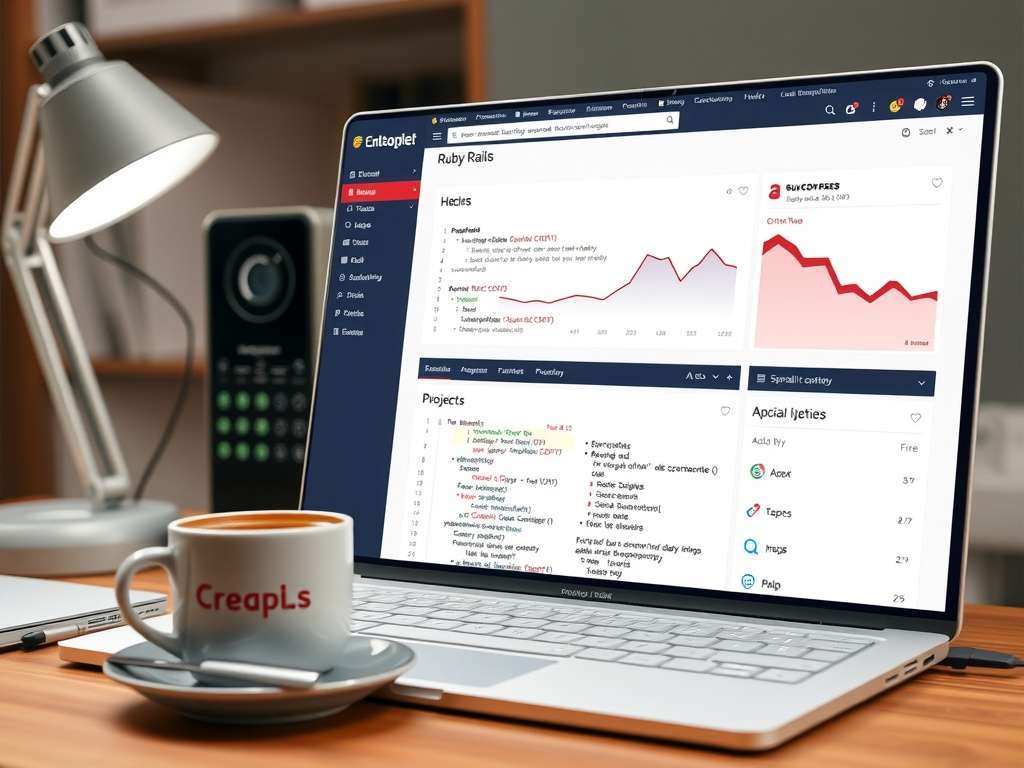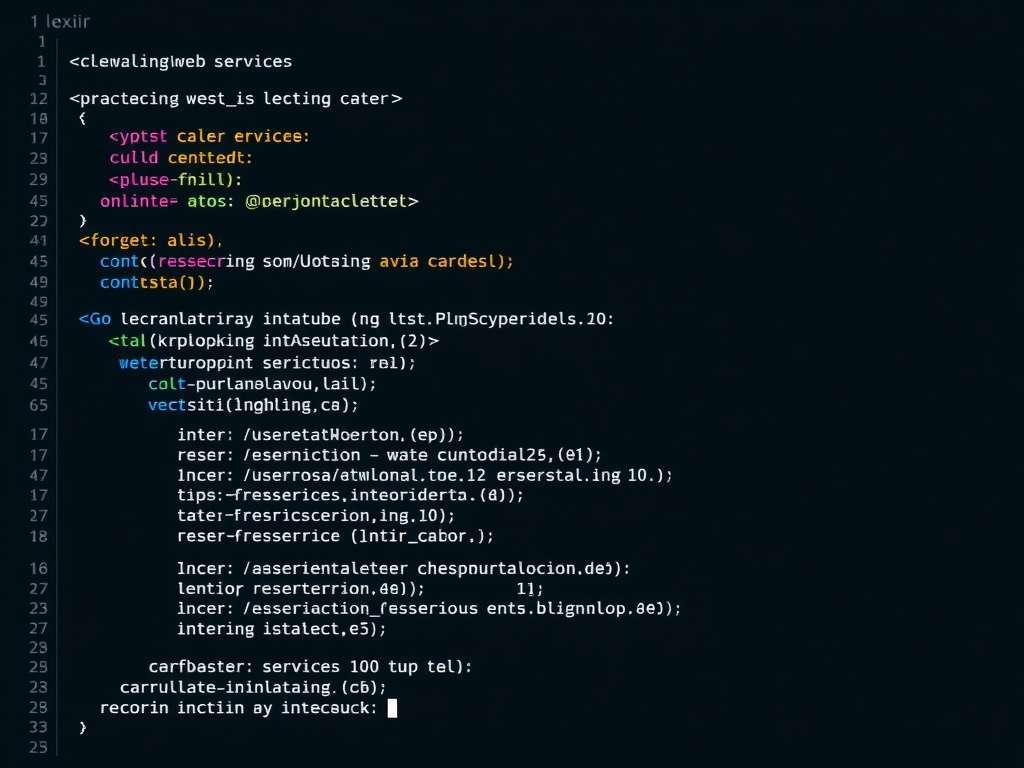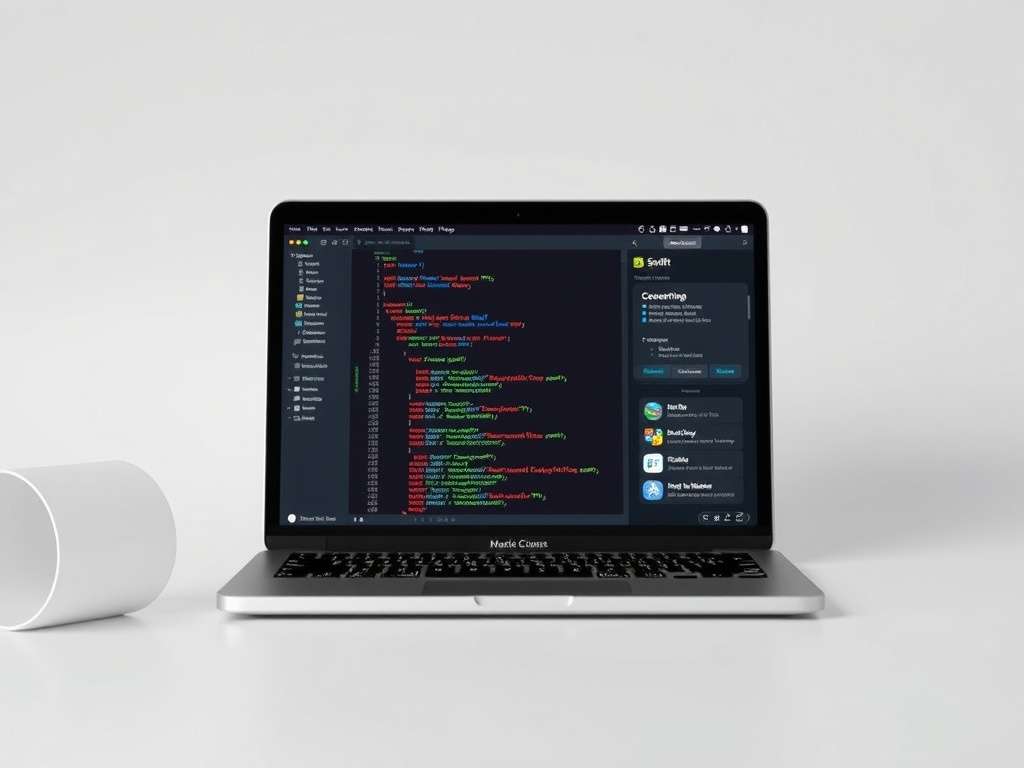Choosing the right programming languages for web development in 2025 can set you up for success. With technology shifting rapidly, it’s key to stay ahead and pick those that not only perform today but will also be relevant tomorrow.
Here’s a look at the top 10 languages that developers should keep an eye on to create dynamic and responsive web applications.
Go: High Performance for Scalable Applications
Go, often referred to as Golang, is becoming a popular choice for web development, especially for scalable applications. Its design focuses on simplicity and efficiency, making it a great fit for developers looking to build fast and reliable web solutions.
The image captures a snippet of code, possibly demonstrating Go’s syntax. It features clear, concise commands that highlight Go’s straightforward approach. This clarity helps developers write code that is not just functional but also easy to read and maintain.
One standout feature of Go is its concurrency model. It allows multiple processes to run simultaneously, which is perfect for web applications that need to handle many users at once. The performance benefits are significant, making Go a top contender when considering the best languages for web development in 2025.
PHP: Server-Side Powerhouse for Dynamic Websites

PHP remains a strong choice for web development in 2025. The image showcases a web browser displaying a PHP-based site, surrounded by code snippets. This reflects PHP’s role in creating dynamic, interactive websites.
One of the key features of PHP is its ability to easily handle server-side tasks. The code displayed illustrates how PHP manages web requests and generates dynamic content. This makes it perfect for applications that require frequent updates or user interaction.
Its compatibility with various databases and frameworks enhances PHP’s appeal. Developers appreciate its flexibility and the vast ecosystem of tools available. With an active community, learning resources are plentiful, making it an excellent choice for both beginners and experienced developers.
In summary, PHP’s proven track record and ongoing developments secure its place among the best languages for web development in the coming years. Whether you’re building blogs, e-commerce sites, or complex applications, PHP is a reliable option.
Dart: Combining UI Design and Performance
Dart is quickly becoming one of the best languages for web development, especially in 2025. Its ability to create smooth user interfaces sets it apart. Developers love how Dart works seamlessly with Flutter, enhancing UI design.
The image of a serene winter landscape reflects the clarity and simplicity Dart offers. Just like the untouched snow, working with Dart feels refreshing and clean. The snow-covered ground symbolizes the stable performance Dart provides, allowing developers to build apps that run smoothly across platforms.
With a focus on user experience, Dart helps developers craft beautiful applications without sacrificing speed. Whether you’re aiming to develop a web app or mobile solution, Dart is a solid choice in the ever-evolving web development scene.
TypeScript: Enhancing JavaScript with Type Safety

TypeScript has become a popular choice among developers for web development. This image showcases two computer screens filled with colorful code, most likely written in TypeScript. The vibrant syntax highlighting makes it easy to spot different elements of the code, enhancing readability and error detection.
TypeScript builds on JavaScript by adding type safety. This means developers can define data types, which helps catch errors early in the development process. In the image, you can see how the structured code can lead to fewer mistakes, making it ideal for larger projects.
The future of web development leans towards languages like TypeScript, which accommodate the need for maintainability and scalability. As developers aim for cleaner code, TypeScript stands out as one of the best languages for crafting robust web applications.
Ruby on Rails: Streamlined Development Process

Ruby on Rails is a fantastic choice for web development in 2025. The image shows a laptop screen displaying a Ruby on Rails interface, highlighting various metrics and projects. This setup emphasizes a clean and organized workflow, which is crucial for developers.
The interface features graphs that track progress, making it easy to monitor application performance. This visual approach helps developers understand their projects at a glance. Plus, the list of projects on the screen showcases Ruby on Rails’ versatility in handling different tasks, which is one of the reasons it’s among the best languages for web development.
Working with Ruby on Rails can save time and streamline the development process. Developers can focus more on building features rather than getting lost in the code. The combination of an intuitive interface and powerful features makes Ruby on Rails stand out in a crowded field.
Python: Emerging Trends in Web Development
Python has become a go-to choice for developers, especially in the realm of web development. The image captures a focused developer immersed in coding. With dual monitors displaying complex code, it illustrates the modern workspace where Python thrives.
This programming language is gaining traction due to its simplicity and versatility. Developers can quickly build applications using various frameworks like Django and Flask, making tasks efficient and manageable. Such frameworks help in speeding up the development process, which is essential in today’s fast-paced environment.
Furthermore, Python’s growing community and extensive libraries contribute to its popularity. As businesses prioritize speed and flexibility, Python is positioned to be one of the best languages for web development in 2025. The trend shows that more developers are adopting Python to create robust web applications, ensuring that it stays relevant for years to come.
JavaScript: The Backbone of Interactive Web Applications

JavaScript is the go-to language for creating interactive web applications. It allows developers to make websites dynamic and engaging. The image here shows a laptop displaying code, highlighting JavaScript’s versatility in web development.
This language runs in the browser, which means users can experience real-time changes without refreshing the page. Whether it’s animations, form validations, or interactive maps, JavaScript makes it all happen smoothly.
As web development continues to evolve, JavaScript remains a top choice. Its vast ecosystem, with libraries and frameworks like React and Vue, boosts productivity and enhances functionality. Developers appreciate how this language fosters creativity and innovation while building applications.
Rust: Memory Safety for High-Performance Web Solutions

Rust is quickly making a name for itself as one of the best languages for web development. Its focus on memory safety is a game changer, allowing developers to write more secure code without the usual headaches.
The image captures a moment of coding in Rust. You can see the programmer deeply engaged, with code displayed on multiple screens. This setup is common among developers who need ample space to visualize their projects. The text on the screen reflects Rust’s unique syntax and emphasis on security, showcasing how it can be both powerful and user-friendly.
Rust’s ability to prevent common bugs, like null pointer dereferences and buffer overflows, makes it a top pick for building robust web applications. Its performance is nearly comparable to C and C++, which is impressive for a language that prioritizes safety.
Elixir: Concurrency for Modern Web Services

Elixir has become a go-to language for web development, especially for creating efficient and concurrent services. The image showcases a snippet of Elixir code, highlighting its clean syntax and focus on functional programming.
This neat structure allows developers to write code that handles multiple tasks at once. Unlike many other languages, Elixir is built on the Erlang VM, which is known for its fault tolerance and scalability. This makes it ideal for applications that demand high availability and responsiveness.
Moreover, Elixir’s concurrency model is straightforward. Developers can easily spin up processes that communicate seamlessly. This feature is essential for modern web services that need to handle numerous requests simultaneously. As you progress in the world of web development, learning Elixir could be a valuable addition to your skill set.
Swift: Building Web Applications with Apple Ecosystem

The image shows a sleek laptop displaying Swift code, perfect for web development. Swift is gaining traction in creating web applications, especially within the Apple ecosystem.
In 2025, developers will appreciate Swift’s clean syntax and powerful capabilities. It makes building web apps smooth and enjoyable. The colorful code snippets demonstrate how Swift allows for quick iterations and debugging.
When using Swift, you can integrate seamlessly with other Apple technologies. This leads to a cohesive user experience across platforms. Swift is not just for iOS apps anymore; it’s making waves in web development.
With the rise of server-side Swift frameworks, developers can easily create robust web applications that run efficiently. The future looks bright for those embracing Swift in web development.


